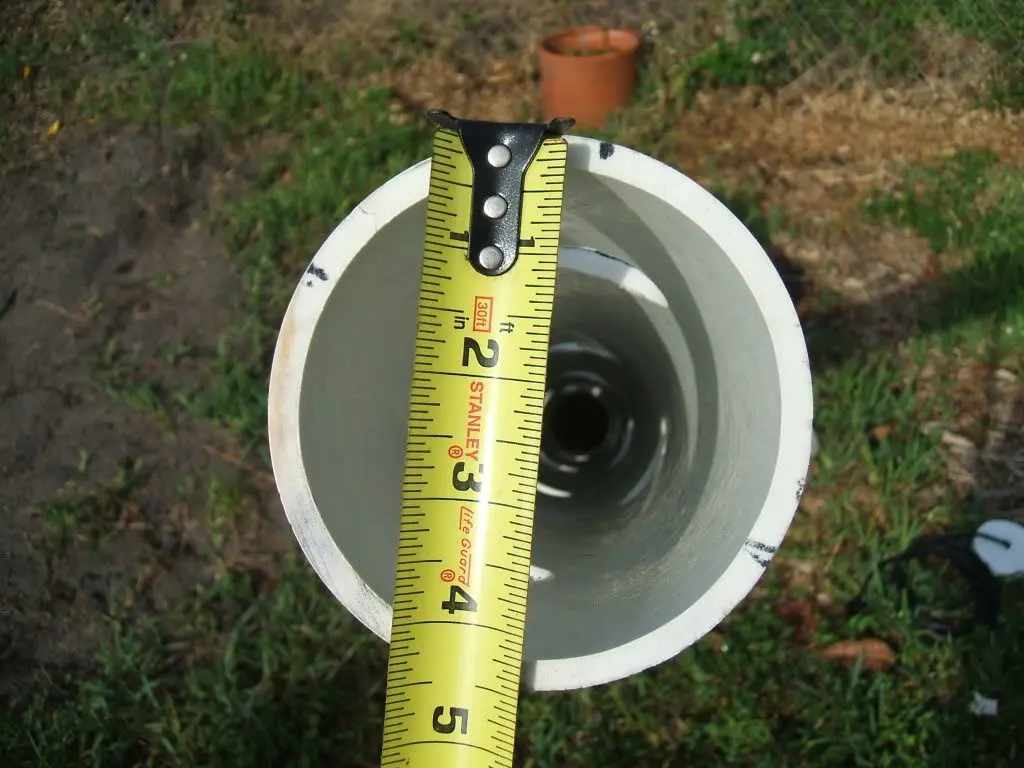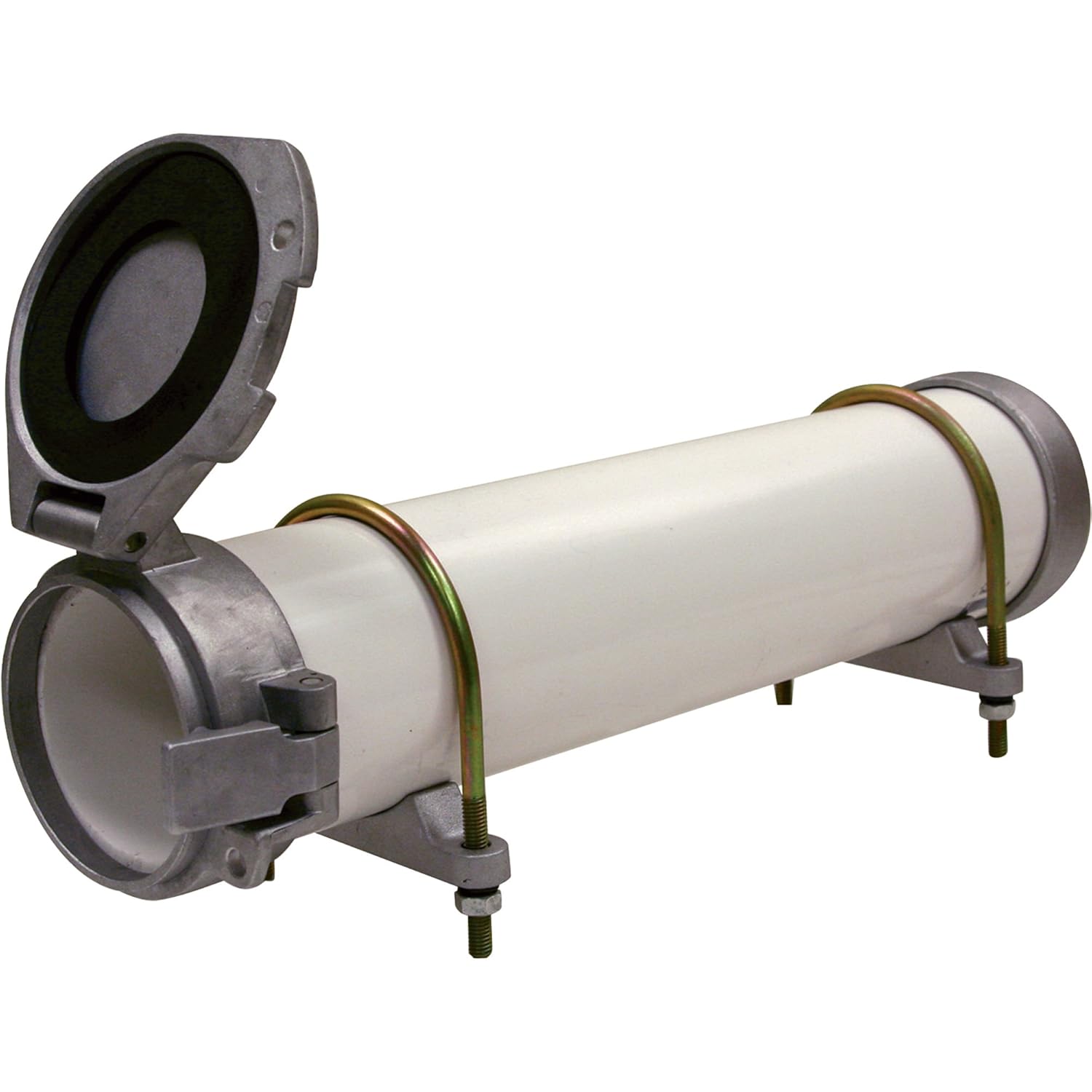13 Survival Uses for PVC

Like many revolutionary ideas, the invention of Polyvinyl Chloride (PVC) piping is not without controversy because no fewer than three men claim to be product’s inventor. You can thank all three because each one improved upon the previous iteration. The first father of PVC was German chemist Eugen Baumann, but he failed to get a patent in 1872, so idea next landed on the radar of countryman Friedrich Klatte 41 years later. Klatte’s version of PVC required sunlight for curing and he was smart enough to patent it in 1913. Now, if only someone could come up with a way to use it! Enter Waldo Lonsbury Semon, a B. F. Goodrich Company researcher. He plasticized PVC, turning out the pipes we consider irreplaceable. You may find it irreplaceable, too, if you're trying to survive.
1. Drinking Water Storage
Carry your drinking water in a PVC receptacle so it stays safe, potable and fresh. Specifically, white schedule 40, used since the 1950s, has proven impervious to leaching chemicals and PVC manufactured after 1977 is even safer. That stated, white schedule 40 isn’t hot water tolerant, so be prepared for leaks around seals if you go against this recommendation. To fashion a drinking vessel, weld and cap one end of a PVC cylinder and add a removable cap on the other end. If you decide to attach a carrying cord, drill holes near the lip or your water will spill out fast.

2. Water Collection
On the subject of water, improve your chances of survival by using PVC as a water collection vessel by cutting a section of pipe (two to three inches in diameter) that allows you to collect water as it cascades down from any number of sources, including tent drainage and bodies of water. If you’re short on aquatic resources, you can siphon water from dripping plants if you hold the PVC pipe properly and exercise a little patience. You can take this idea one step further if you choose a PVC pipe that has expanded interior capacity, so your water glass morphs into a water bucket.
3. Well Casing
Your ability to headquarter in an area where there’s a water supply is an ideal environment for any survivalist, but suppose you happen upon a great hiding place, but the nearest source of water is a well that has been damaged at the mouth, rendering it useless? Turn to large-circumference PVC pipe to make well casing that revitalizes the mouth of the well so it can be tapped. Clean up the area first, drill holes in the pipe before you center and position it and then fill the area around the PVC shell with gravel and soil. If you have a power supply, insert an electric water pump into the void. If not, rig a water collection bucket (see above) of PVC pipe that’s smaller than the well casing so you can manually retrieve water when you need it.

4. Underground Item Storage
Whether your objective is burying a time capsule or you must safeguard supplies for use at a later time, manufacture a variety of storage vessels from different widths of PVC pipe that will stand the test of time. One end of your storage or supply container must be permanently affixed to its cap, and cement works as a sealant. A second cap allows you access to the contents, which are safeguarded from theft and destruction, but beware of thread-embellished surfaces on the removable cap end because threading channels present a waterproofing threat. Overcome this by using melted candle wax to create a seal so water can’t get in. Use camouflage paint to disguise your storage container so it hides in plain sight.

5. Secret Storage Compartment
Not every situation requires oversize PVC pipes to make a container, and in fact, your survival may depend upon your ability to hide small survival objects and supplies in tight places. To make a small, personal storage container, employ PVC pipe with the smallest circumference to craft a storage safe that slides easily into a jeans pocket, glove compartment or fasten it to a chain and keep it with you at all times. Use a sealant to bond a cap to the pipe, leaving the other end of the cylinder open for easy access. You might be surprised how many essential items a small vessel can hold, including hooks, matches and fishing line, made from ordinary cotton twine or dental floss immersed in wax for waterproofing and strength.

6. PVC Tools
Cave men were proficient at crafting tools and since you’ve evolved, making rudimentary tools using PVC should be a walk in the park for you. To assess the types of tools that would come in handy for anyone pursuing a survivalist lifestyle, imagine the implements you use every day to function and emulate their shapes as you divide up sections of PVC pipe. Digging and shoveling will likely be a primary activity as you seek to build, buttress and construct, so approach this project by cutting small sections into each of the PVC sections you cut and then use a file to shape and sharpen each one. Thinking like a cave man can save your life.
Having put yourself into the mindset of early man, you may wish to fashion a quiver to hold arrows for your survival bow. Since a quiver is more apt to be handy when you’re on the move, your container will require a strap so you can sling it on your back and move quickly. To craft your quiver, use a hacksaw blade or wire wood saw to cut a pipe section to the length with which you are most comfortable. Make it too long and your stride could be compromised not to mention problems you could have retrieving contents on the fly. Attach a cap to the bottom of the quiver and puncture two small holes to fasten the carrier strap of cord or wood. Wrap the quiver in camouflage duct tape to make it stealthier.

8. Blow Gun
Perhaps you feel comfortable with a dart gun in your hand and the materials you have on hand are just what you need to fashion one. The engineering isn’t difficult: use a small diameter section of PVC cut to the length you desire and then modify the surface by carving ridges into it so there’s a textured launch pad that adheres to slender pieces of wood that are taped on to stabilize the dart launcher. If you try to shoot darts from the PVC surface without benefit of the wood that acts as traction, your weapon could flex or bend when you attempt to use it to protect yourself.

9. Arrow Launcher
It stands to reason that you wouldn’t bother making a PVC quiver if you didn’t intend to fill it with arrows or darts. Make your next project an arrow launcher. A primitive but effective projectile can be crafted by sliding a slim shaft of PVC into a slightly larger one. To propel the inside PVC tube will require some practice as you become comfortable thrusting and launching. Attaching a handle to the outer pipe can help you get a grip. If you discover that there’s too much room inside the outer cylinder, try shoving a plug into the interior to shorten the amount of distance the spear-like inner vessel must travel to hit its target. As for technique, draw the dart back and use your upper arm and wrist to launch the projectile.
10. Longbow
You’ve got the quiver and you’ve got the dart launcher, but your arsenal of weapons isn't complete without a longbow made of PVC piping. If you have access to fire and can effectively use the heat to manipulate flatten areas of the pipe until it resembles the shape of bow, that's a good start. Survivalists attempting this project are usually successful, but the heat could produce a weaker structure in the middle that has the potential to crimp or even bend, so be gentle as you shape the bow and don’t go for an ultra-thin feel. If you happen to be in possession of fiberglass rods, insert taped, bundled rods into the bow while it’s still malleable. Employ any sort of string (animal tendons are ideal) at your disposal to finish the bow once you’ve drilled holes in either end to hold it.

11. Club
When push comes to shove and your life is on the line, having a weapon that doesn’t have to be loaded, cleaned, repaired or require several parts to be useful can save your life. Defend yourself adequately with a hefty club capable of inflicting as much harm as possible on anyone messing with you. Cap a section of PVC pipe that’s fairly narrow, fill it with sand or wet concrete and cap the other end. Concrete adds heft and won’t require another sealant. That stated, don’t get carried away and make a club that give WWF wrestlers pause! You must be able to wrap your hand around your club, so keep this in mind if you value the security of a solid grip. By the way, if you make two of these and connect a PVC projectile point to one end, you can turn it into a spearfishing pole.
12. Fishing Pole
It stands to reason that plastic piping with the smallest diameter is your best bet to craft a fishing pole, and while it won’t give you the same response as a lithe, bendable rod, who cares as long as you catch fish? Fashion a plug of either wood or cork and shove it about seven inches into the pipe at the handle end and if you didn’t bother to follow Lifesaving use #4, this provides a tidy storage locker for line, hooks and fishing paraphernalia needed to do the job. Add a screw cap to protect your stash from the elements and then cut holes or grooves into the “fishing”end to secure your line. Be sure to check out these fishing tips for wilderness survival.
13. Boat Anchor
Can PVC be used to make a boat anchor? Why not? Select or saw off a section of PVC that is big enough to do the job but not so big you won’t be able to lift it into the boat once it’s filled with concrete. If you have at your disposal heavy chain, you can put one end of it into the cement filled section of PVC so while it cures, the chain will be solidly embedded. If you have no chain or chain substitute, you can sink U-bolts into the cement so once you get your hands on it, all you need do is slip it into the bolts and declare anchors away.

We know what you’re thinking: these ideas are cool but if a crisis hits, I’m not necessarily going to have a stash of PVC around so I can start hammering out these ideas. But as a survivalist, this list of projects is meant to give you ideas of what you are capable of doing should you find yourself in a dire situation. Lots of people who have little money but big concerns about survival are ideal candidate for these projects because even without a wad of cash, all of these projects are budget pleasing and creative. Besides, they’re fun to make and knowing you have the skills to craft something from nothing is going to give you a big boost of confidence.


